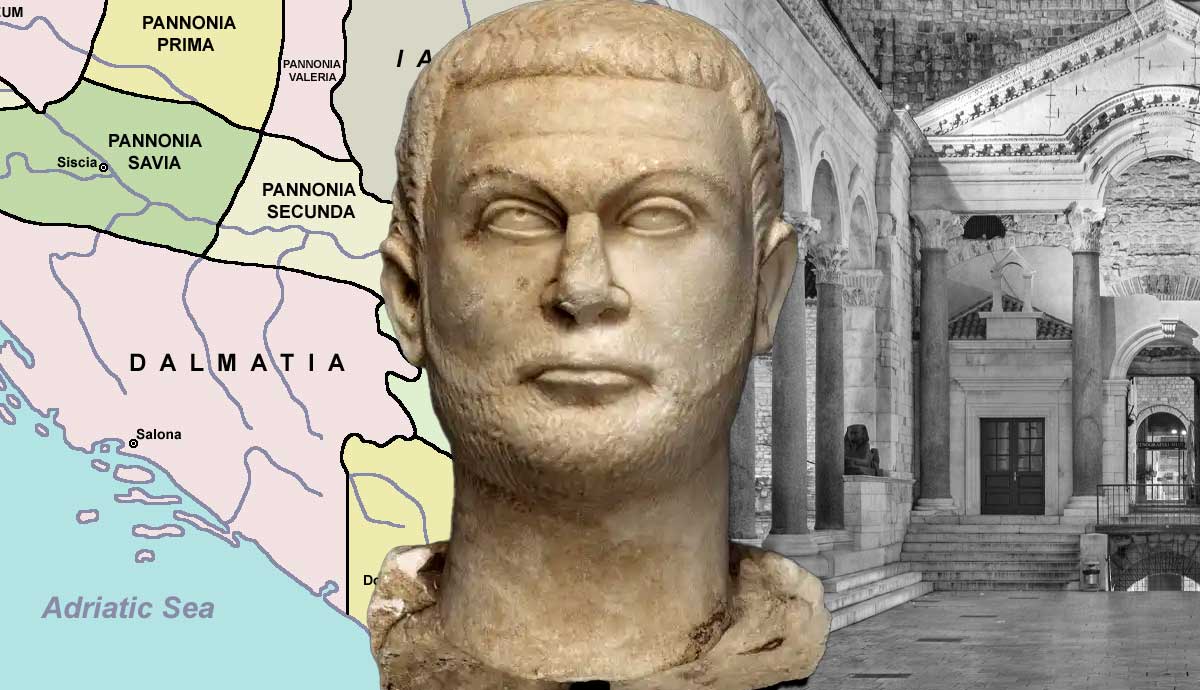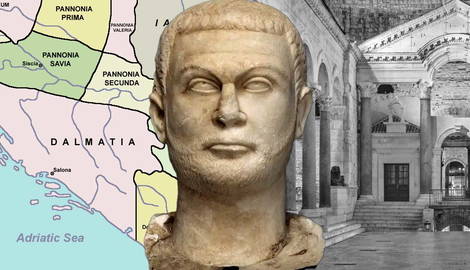
Emperor Diocletian ruled the Roman Empire from 284 to 305 CE. He was a formidable ruler who ended a period of turmoil in the Roman world. Diocletian stabilized the Roman Empire but also carried several reforms that bolstered the empire’s power and the emperor’s influence. To end bloody civil wars, Diocletian introduced a new system of government – the Tetrarchy. He also pursued economic reform, strengthening the currency and regulating prices and taxation. While Diocletian created the powerful foundation for the fourth-century Roman Empire, his experiment of ensuring a peaceful transition of power (he himself voluntarily abdicated) ultimately failed, leading Rome to another civil war.
Emperor Diocletian Ended Political Anarchy

Emperor Diocletian, or Gaius Aurelius Valerius Diocletianus, was born in 244 CE, in Dalmatia, near Salona (now Solin in Croatia). As a young man, Diocletian served as a soldier and then a Roman army officer. He rose to power during political instability and military strife in the Roman Empire – the so-called Crisis of the Third Century. In 284, Diocletian was acclaimed as the emperor by his legions in Nicomedia (modern-day Turkey) following the assassination of emperor Numerian. Diocletian was well aware that the imperial throne was incredibly dangerous. After all, most of the third-century emperors did not rule for long. They perished on the battlefield or were assassinated, like Emperor Aurelian.
Diocletian Established the Tetrarchy

Following the victory over Numerian’s brother, Carinus, Diocletian established the Tetrarchy. In 293 CE, he divided the Roman Empire into four administrative regions, ruled by the two senior emperors (Augusti) and two juniors (Caesares). The plan was to satisfy the powerful generals’ political ambitions by allowing each of them to rule over a quarter of the Roman world. It aimed to improve the Roman Empire’s stability and, more importantly, ensure peaceful and smooth power transfer.
Both Augusti had to abdicate at the given moment, leaving the place vacant for two junior emperors to take over, and so on. The effective cooperation of the four co-emperors minimized the possibility of usurpation and civil war. The first two Augusti were Diocletian in the East, and Maximian in the West, while Galerius and Constantinus Chlorus were appointed as Caesares.
The New Emperor Spearheaded Ambitious Economic Reforms

When Diocletian ascended the throne, the Roman Empire was faced with a myriad of crises. Gone was the golden age of the Pax Romana. Decades of civil wars and political instability led to the collapse of the imperial economy. Diocletian had to act fast. The new emperor implemented several economic reforms to address the empire’s financial challenges. He introduced a new taxation system to increase revenue and implemented price controls to rein in rampant hyperinflation.
Diocletian also bolstered the value of the imperial coinage, which later allowed Constantine the Great to introduce solidus – “the dollar of the Middle Ages.” To ensure economic stability, Diocletian issued edicts that regulated professions and tied individuals to their occupations. The aim was to maintain a stable workforce and control prices. However, those measures limited individual mobility and economic freedoms.
Diocletian Strengthened the Position of the Emperor

Diocletian’s reign, and the period that followed it, is also known as the Dominate, due to the authoritarian character of the monarchy at this time. During the Third Century Crisis, the emperor’s authority was severely undermined by numerous usurpations, brief reigns, and often violent deaths of the emperors. To restore people’s trust in the emperor’s powers, Diocletian turned to the East, to the court of Persia and Hellenistic kings, worshipped as godlike rulers. This new way of autocratic kingship was taboo for the Romans, who despised absolute rule since the foundation of Rome.
From Augustus onwards, the Roman emperors had to take part in a charade, by simply calling themselves “first citizens.” Some rulers, like Caligula, tried but failed to emulate oriental monarchs. No more. Diocletian crafted himself as a Godlike ruler. He introduced complex court rituals, such as proskynesis (prostrating in front of the monarch), and demanded to be called “Lord and Master,” and “Lord and God.” It worked, as the emperor ruled for twenty years and died from natural death.
He Also Reshaped the Roman Empire

Although Diocletian remade the image of the monarch and secured the emperor’s position through the rule of four, the usurpations continued. To further minimize challenge to the emperor, Diocletian carried the administrative reform. He doubled the number of provinces and then grouped them as twelve dioceses and four prefectures. The emperor also took the major step of separating military and civil offices at the provincial level.
The local bureaucracy was expanded significantly to deal with the reality of the vast Empire, and the numerous challenges it has faced, both external and internal. Furthermore, to increase the Roman’s army defensive capabilities, Diocletian began the reorganization of the military hierarchy and the legions, which would be finalized under Constantine the Great.
Emperor Diocletian Abdicated the Throne But His Experiment Failed

While the so-called Great Persecution was overblown by the early Christian historians, in the later years of his reign, Diocletian tried to rein the growing power of Christianity, leading to mass arrests and executions. This was probably another attempt to stabilize the Empire by ensuring religious unity. Then, in 305 AD, Diocletian made something that no one else in the history of the Roman Empire ever did. He voluntarily retired and apparently spent the rest of his life gardening in the lavish palace he built for himself near Salona (present-day Split).
Maximian followed suit, but the days of the Tetrarchy were numbered when the two sons of tetrarchs, Maxentius and Constantine, tried to gain the throne by force. What followed was the series of civil wars that brought down the Tetrarchy and united the Roman Empire once again under the rule of one man, Constantine the Great and his powerful dynasty.










